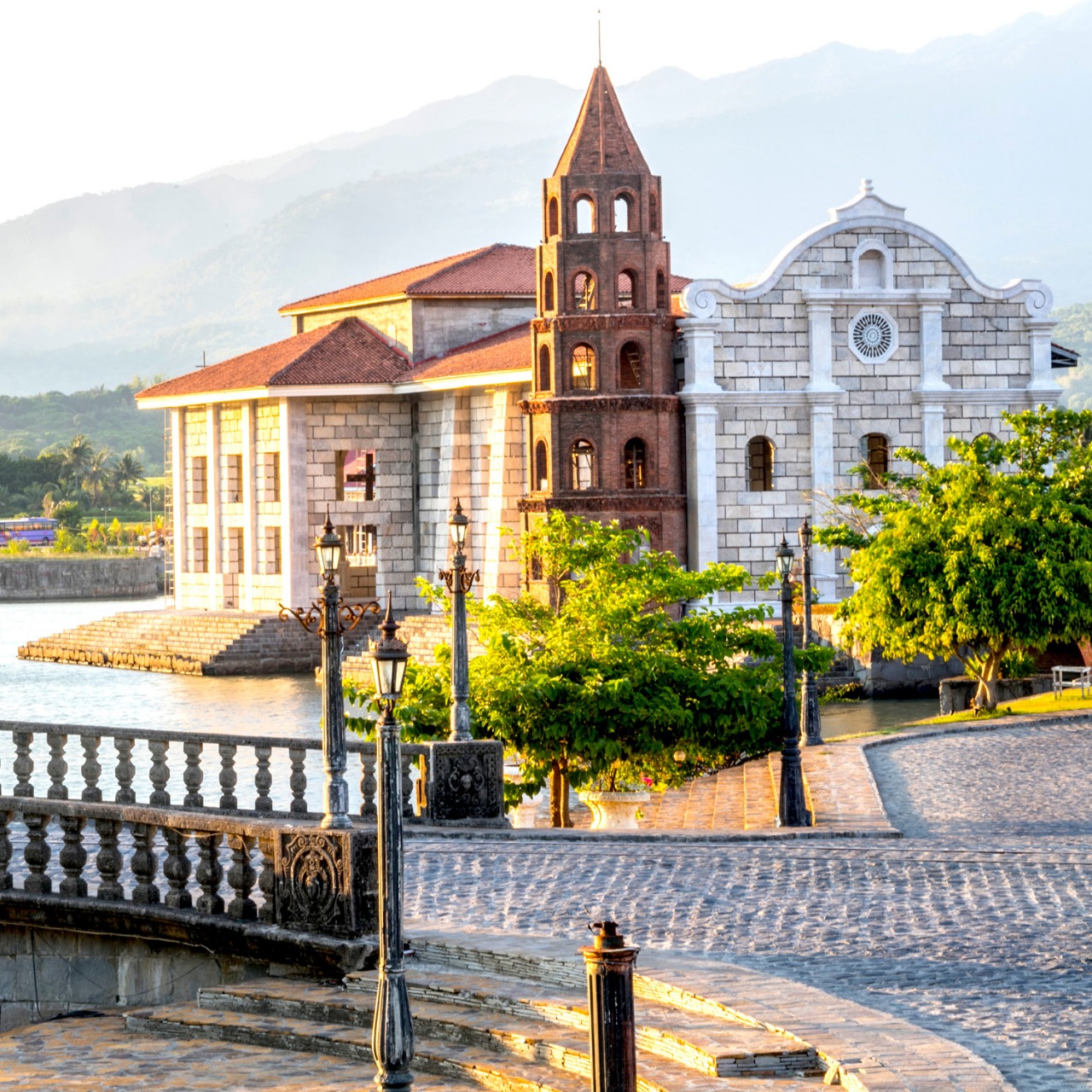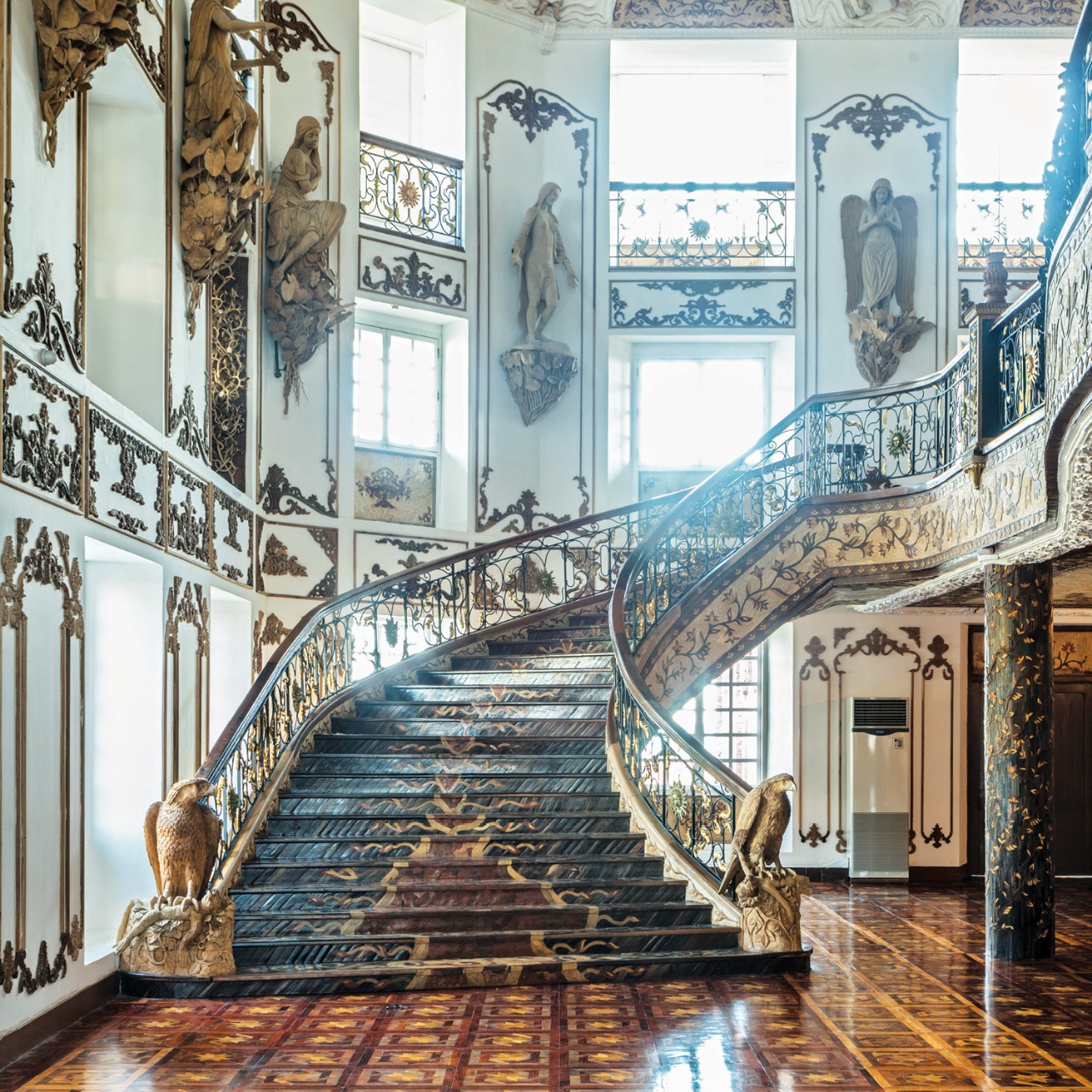By JOSE PAOLO S. DELA CRUZ
Photography by JAR CONCENGCO
Here, the past finds itself placed firmly in the present, ready to be enjoyed by generations to come.

It was 2003 when real estate magnate Jerry Acuzar started transporting and re-building neglected Spanish mansions in a little known beachside property in Bagac, Bataan. Today, his project has evolved into a full-grown tourist and cultural destination — one that transports visitors not just to another place, but to an altogether different era.
Here, Old Manila in its pre-war glory comes to life, historic churches once again rise, and the streets remain cobblestoned (with a tram to bring you around, no less). Some of them are even made from the exact same materials that were transported from their original locations, while some were re-imagined and re-created based on archived photos from the National Museum and other historical sources. Either way, they carry the kind of magic that only a touch of nostalgia can provide.

The first hotel
“This isn’t a convention center, it’s a work of art!” gasped a foreign delegate when the Asia-Pacific Economic Cooperation (APEC) held one of its pocket events in Las Casas Filipinas de Acuzar in 2015.
The said masterpiece is a sprawling, three-story replica of Hotel de Oriente, originally in Binondo, Manila and the first establishment of its kind to ever rise in the Philippines. It is the latest addition to be completed in Acuzar’s 26-hectare homage to the past.
Built in 1889, the original Hotel de Oriente was only one of two buildings that enjoyed the fringe perks of having electricity and a telephone line during its heyday (Hotel de Oriente’s telephone number was “2.” Malacañang was number “1.”).
Under the baton of architect Jordan Hernandez and the creative direction of artist Ping Ceriola, the once famous structure — which was reduced to rubble during World War II — finds a second, re-imagined shot at existence.
While the Neoclassical architecture is easily replicated from the outside, re-creating the indoor areas proved to be a challenge since no existing photos of the interiors could be found. And so, the men behind the project decided to re-imagine the property, utilizing Baroque influences that were in vogue during the era.
Following Acuzar’s objectives of always promoting Filipino ingenuity where he can, the team decided to use more than seven types of indigenous Philippine wood: Kamagong, Tanguile, Balayong, Narra, Ipil, Batikulin and Gmelina, just to name a few. “We wanted to showcase the natural beauty and colors of the wood, so we used as little varnish and lacquer as possible,” notes Ping, as he gave the Enclaves group a tour of the facility.
After passing the tall wooden doors that guard this masterpiece, one is greeted by intricate wooden pillars and banisters that evoke a Baroque castle from Europe. However, once you look closer, the elements draw you back to designs that dominate colonial Philippines.
Each banister is guarded by two pieces of sculpture depicting indigenous monkey-eating eagles clutching their prey, leading up to the sheen of Kamagong and Balayong steps. The railings are brass with patinated tinges of gold. The upper walls are guarded by 12 “Muse” pieces of sculpture fashioned from Gmelina, one of the lightest Philippine wood in both hue and weight.
What immediately commands attention is a wooden rendition of Juan Luna’s Spoliarium created by Ping’s daughter, Maria Monina. The giant mosaic, which relies mostly on the wood’s natural colors, is re-constructed from hundreds of pieces of wood that were cut into small pieces. Meanwhile, the high ceiling consists of reproduced murals by National Artist Botong Francisco that have been created with wood.
All in all, the pillars, ceiling and walls are a testament to wood marquetry — born from the impressive efforts of more than 1,000 artisans, who worked in various shifts 24 hours a day, seven days a week, in the last two years. While most of them hail from provinces that have their own woodwork industries such as Paete, Laguna and Pampanga, the group eventually grew to include Bataan locals, who learned about the arts at the Acuzar workshop.
Inside Hotel de Oriente is a grand ballroom aptly called the “Manila Hall,” the same place where the APEC delegation was hosted. It is another wooden masterpiece from floor to ceiling. The floors are intricately detailed with designs that mimic a kaleidoscope of browns in every shade.
Paintings and marquetry depicting various Philippine flora adorn the walls while 3D angels hang from the ceiling. The naturally light color of Gmelina are mostly untouched on the angels, save for some golden varnish and white paint on their wings. The stage, meanwhile, looks like a giant canopy with vines, also produced through the Acuzar artisans’ mastery of wood works.

An old new home
Another place worth visiting is Las Casas Filipinas de Acuzar’s Casa Byzantina, a three-story intricately designed bahay na bato (stone house), which was also originally built in Binondo, Manila. The University of Manila, once called Instituto de Manila, rented it for elementary and high school classes before it transferred to Sampaloc, Manila in 1919.
With the passing of the years, the home lost much of its grandeur when it was rented out to various tenants after World War II. By the time it was acquired by Acuzar, it had been inhabited by informal settlers, with each family settling into their own nook and cranny in the then-dilapidated home.
“If you saw it before it was torn down, you’d have seen a sari-sari store here, and it had lost all of its beauty. It was really a squatter’s area,” explains Dexter Manansala, head tour guide of Las Casas Filipinas de Acuzar. Hearing him say this now in the same home that had been rebuilt in Las Casas using the same materials makes it hard to imagine that Byzantina was once in such a poor state.
The seven-bedroom property, which now carries with it a P150,000-a-night price tag, can be availed of by groups of up to 16 people. It also follows the prevailing architecture of pre-war Manila. In between the second and first stories is a mezzanine floor, which can be reached by taking a short flight of stairs from the second floor. Here, one will find three bedrooms. “The reason why some floors, especially those used for bedrooms, are lower than the rest of the house is to make the ceilings taller without altering the façade. Taller ceilings mean better ventilation and cooler rooms,” explains Dexter in the vernacular.
These two are just some of more than 55 beautiful structures that can be enjoyed in Las Casas Filipinas de Acuzar, whose outdoors are just as beautiful as the ornate indoors. A stroll on the cobblestoned streets at dusk, especially when the lamps have been lit and the sunset bathes the canals and the old homes in breathtaking hues, is sure to inspire anyone who drops by.
Some rafts are even placed on the canals, giving visitors an opportunity to experience not the canals of Venice, but the clean, romantic canals that once served as the arteries of old Manila. And for those who love the sea, there’s the beach that faces the West Philippine Sea.
Beautiful and timeless, Las Casas Filipinas de Acuzar is so much more than a tourist destination. It is a salute to the past, an homage to a long-lost beauty now immortalized in wood, stone and Filipino ingenuity.





